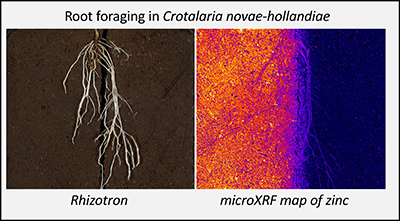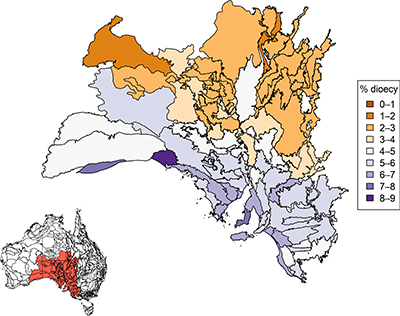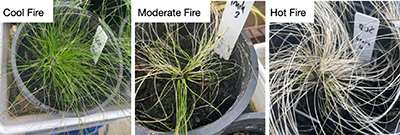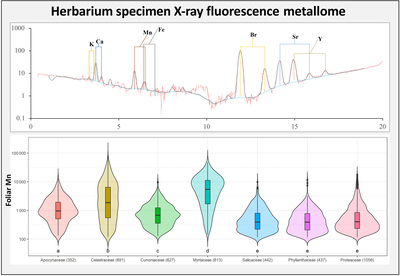Australian Journal of Botany
Volume 71
Number 4 2023
In contrast to obligate zinc hyperaccumulators, the facultative zinc hyperaccumulator Crotalaria novae-hollandiae from Queensland (Australia) does not actively forage for zinc-rich patches in the soil.
Dioecious plants comprise 6% of Angiosperm species, yet the proportion of dioecious species varies considerably among the native floras of the world. Higher proportions appear to be linked to life history and habitat climate conditions; however, the variation of proportions across larger, climatically diverse landmasses is rarely studied. We compared the proportion of dioecious plants of total native species richness across the climatically diverse southern Australia, to identify dioecious ‘hotspots’ and climate and life-history conditions associated with higher proportions of dioecy.
Grass species have adapted strategies to survive and respond rapidly in fire-prone environments and this study investigated the response of N. trichotoma seeds and seedlings to increasing temperatures associated with fire. Although the 140°C treatment was lethal for all seeds, germination was observed across all lower tested temperatures. For the seedlings, the 120°C treatment occasioned extensive plant damage; yet, no seedlings were killed by the tested treatments. Consequently, our findings suggest that although fire alone may not be a suitable method for killing the seedlings, it may be used to kill seeds at or near the soil surface.
The use of a new data-processing method for X-ray fluorescence data of herbarium specimens has uncovered a range of novel trace-element-hyperaccumulator plants and shown systematic differences among selected families from the Queensland flora, in their trace-element accumulation.
Wollemia are distinguished from other members of their family by their long, unbranched, short-lived primary branches. An abundance of secondary branches, growing from the axils of leaves of primary branches of Wollemi pines were found on many seedlings. Tertiary branches growing from the leaf axils of the secondaries were also produced. The cause of this branching is known, but confirmed the prediction that buds occur in every leaf axil. The fossil record and evolutionary links of Wollemia to other Araucariaceae should be re-examined.










